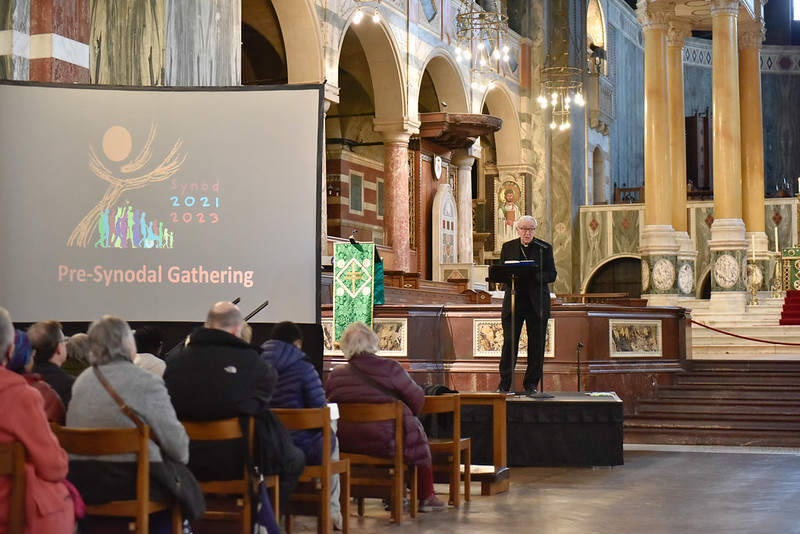Synod Answers
The role of women, including the “failure” to “make good use” of their contribution and their exclusion from formal ministries, was described as a “constant theme” in diocesan reports. “On the whole women were not considered a marginalised minority so much as a silenced, unrecognised majority whose gifts lie unwrapped and ignored in the parish narthex,” the report states. There is a call to allow women to preach the homily during Mass while “sadness and frustration” that women’s views are not taken seriously or treated as second class “permeate all the reports”.
You can tell this is from England by the language and the spelling. I’m leaving it in to convince you of the authenticity of Christopher Lamb’s summary report of the synod consultations of the laity in The Tablet. It’s not all we would want, but this is what’s going to the bishops. It’s a measure of transparency I do not expect to see here, and I can’t wait to see what the hierarchy of England and Wales makes of even this much of the laity’s opinion.
I am going to reverse three paragraphs in Lamb’s report to emphasize the push for an expanded role for women. The report states, “The model of a welcoming Church was perceived to be particularly compromised by the failure to integrate certain groups or categories of people whom the reports describe as alienated or marginalized.” In the report, women are not only seen as marginalized, though they may be alienated. Women are a “silenced, unrecognized majority.” Hang on to that insight!
Lamb summarizes who the British laity considers marginalized:
The report lists LGBTQ+ Catholics among a host of “marginalised groups” which include women, LGBTQ+ Catholics, young people, divorced and remarried Catholics, the Traveller community, those with additional needs, people of colour and traditionalists devoted to the Old Rite liturgy. The latter, described as “very few in number”, say they feel “sadness and anger” about the restrictions issued by the Pope’s restrictions on the pre-Second Vatican Council liturgy.
I have to interrupt right here to say that the “very few” traditionalists there have been very actively debating the Pope’s escalating moves to restrict their practices, which include an apostolic letter just this week. I am ignoring that Francis is also concerned about certain “creative” liturgical innovations. That’s a genie that’s not about to go back in the bottle among feminist liturgists. But let’s go back to the report instead:
LGBTQ+ Catholics often feel excluded or sidelined with stories shared during the synod which show how “gay people are singled out or made unwelcome” and are the “subject to prejudice and hostility”. The official description of same-sex orientation as “intrinsically disordered” was raised and one diocesan report said there is “a widespread view was that people shouldn’t be punished because of who they are attracted to”. A strong call was made actively to listen to LGBTQ+ Catholics, accompany them and “offer healing for past damage”.
I have two caveats here. While these strong quotations reflect actual speakers, they may also suggest that these comments are not universally supported. While using “LGBTQ+” is an advance over some previous terminologies, it does not sufficiently recognize the unique prejudice against transgender persons, whom I would argue are uniquely discriminated against when it comes to public participation in the church.
The press of news and rumor in the past few weeks has taken my attention away from the synod. I hope this sharing of the preliminary report from all England and Wales presages the publication of the diocesan reports here, before the great maw of the USCCB beats down the expression of the sense of the faithful. Prove me wrong!


2 Responses
For your consideration:
http://www.pelicanweb.org/solisustv18n07page24.html
I just caught up on some reading. I appreciate your brevity. You made your analysis concise after each quotation, very effective. Using a larger font from the quotations was also effective. Thank you again for leading readers like me up to the mark.